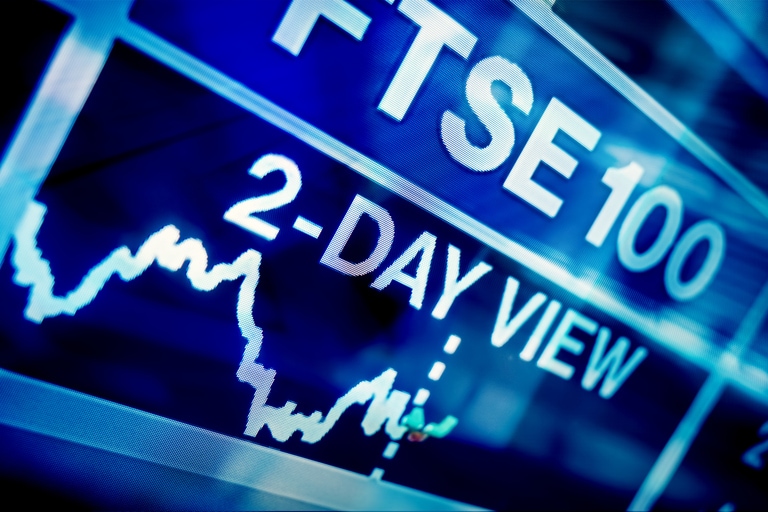While the last two weeks have seen quite a lot of volatility, equity markets in Europe have struggled to go anywhere, although they remain very much in a down trend.
With the DAX ending lower for the third successive quarter, and at its lows of the year, we saw a solid rebound last week, however we got off to a lacklustre start to the week yesterday, as the market carried over the hangover from Friday’s positive US jobs report.
This continued in quiet US trading yesterday, with the Nasdaq hitting a 2 year low, pulled down by chip stocks after the US government announced further restrictions on China’s access to US semiconductor technology. This move lower appears to have translated into weakness in Asia markets which have fallen sharply, while US 10 year yields have moved sharply higher, back to within touching distance of 4%.
With the latest Fed minutes due tomorrow, and the latest US CPI report due on Thursday the mood is likely to remain a little fraught as markets assess the prospect of another 75bps rate move by the Fed in November, and the risks that the US central banks actions might have in pushing the global economy into recession. This risk was acknowledged by Fed governor Lael Brainard in comments last night when she expressed concerns over policy lags, which could well hit the economy in the months ahead.
Given the recent narrative surrounding the UK economy over the last couple of weeks you’ d have been forgiven for thinking amid some of the more hysterical coverage, that the world was coming to an end, and that the economy was on the ropes.
It is true that the political messaging from the government has been, haphazard, careless, and naïve to say the least, prompting turbulence in currency and bond markets alike, but some of the commentary around recent events has been borderline ludicrous.
Looking at the wider numbers, UK Q2 GDP was revised up to 0.2% from an initial -0.1%, meaning that the UK economy isn’t in recession, at least not yet.
The new measures to support the economy by way of the energy price cap are providing a buffer of sorts to consumers, and with UK gas prices currently at their lowest levels in months, the actual cost may well be much lower than forecast a few weeks ago
That’s not to say consumers aren’t feeling the pinch, they are with inflation in double digits and wages growth at half that rate, but the UK is hardly unique in the fiscal challenges being faced by governments across Europe and the rest of the world.
The UK government now needs to show the markets that they can address the problems at hand without making matters worse, and on that the jury is out, with borrowing costs surging across the board, although that isn’t a problem unique to the UK right now.
One silver lining is that in July UK unemployment fell to its lowest level since 1974, to 3.6% a figure it is expected to match in data released for the 3 months to August later this morning.
On wages, things are also going in the right direction, with average earnings including bonuses ticking up to 5.5% in July and expected to rise to 5.9% for August.
More disappointingly, the fall in unemployment has coincided with a rise in the number of people who are long term sick, which rose to 21.7% and a 6 year high.
Vacancy rates have nonetheless remained high, despite falling by a modest 34k to 1.3m, which means wage growth is unlikely to slow significantly in the short term.
The real battle remains against inflation which fell to 9.9% in August, however the sharp decline in the pound in the past month against the US dollar has done enormous damage to that battle given that we were at 1.1600 this time a month ago and are now well below that.
This is the next challenge for the Bank of England, and one which it is currently struggling with although at least it has realised that its policy of quantitative tightening wasn’t such a good idea after all, and now looks set to extend the measures it implemented last week to avert collateral matching problems in the pensions market.
Bond markets are likely to continue to remain choppy until the Chancellor unveils his new budget, now scheduled to be unveiled on 31st October. Hopefully it won’t be a Halloween horror show.
That said the pound has remained under pressure though for the most part that is down to the strength of the US dollar more than anything else. Against the likes of the euro, and most of its other G10 counterparts it has managed to recover most of, if not all its losses.
EUR/USD – target at the 0.9620 area achieved, rebounding from 0.9535, however remain in the downtrend from the highs this year, keeping the bias for further losses towards 0.9000. A break above parity and the 50-day SMA is needed to signal stabilisation.
GBP/USD – a new record low of 1.0336 has seen the pound rebound back towards 1.1490, however the bias remains lower in the short term. We have support at 1.1000, a break of which targets a return to 1.0800.
EUR/GBP – after last month’s surge up to 0.9280, we’ve slipped back equally as quickly. We are still in the uptrend from the August lows but are struggling to move through the 0.8820 area. While below 0.8830 the bias suggests a drift back towards 0.8650.
USD/JPY – continues to edge higher but hasn’t yet been able to take out the pre-intervention peaks at 145.90. Bias remains higher towards 150.00, while above the lows last week at 143.50
CMC Markets erbjuder sin tjänst som ”execution only”. Detta material (antingen uttryckt eller inte) är endast för allmän information och tar inte hänsyn till dina personliga omständigheter eller mål. Ingenting i detta material är (eller bör anses vara) finansiella, investeringar eller andra råd som beroende bör läggas på. Inget yttrande i materialet utgör en rekommendation från CMC Markets eller författaren om en viss investering, säkerhet, transaktion eller investeringsstrategi. Detta innehåll har inte skapats i enlighet med de regler som finns för oberoende investeringsrådgivning. Även om vi inte uttryckligen hindras från att handla innan vi har tillhandhållit detta innehåll försöker vi inte dra nytta av det innan det sprids.






